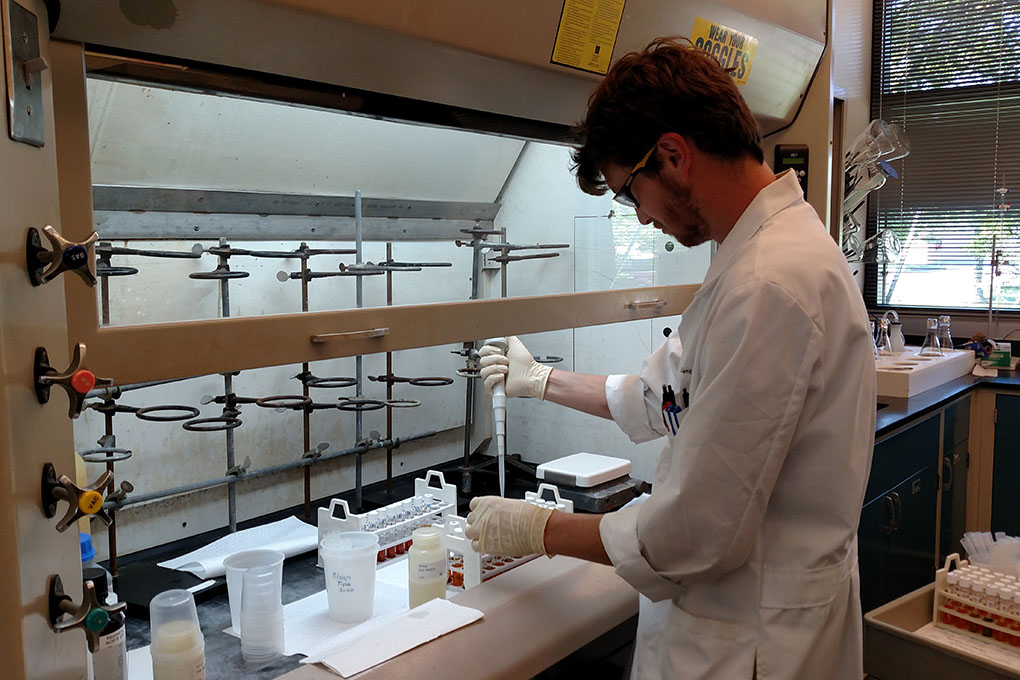Industrial Wastewater Treatment Market to Reach $174.9 Billion – openPR.com

Industrial Wastewater Treatment Market: A Strategic Enabler for Sustainable Development Goals
Market Projections and Growth Trajectory: 2024-2031
A recent market analysis indicates that the global industrial wastewater treatment market is projected to expand to $206.81 billion by 2031, reflecting a Compound Annual Growth Rate (CAGR) of 6.1% from 2024. This growth is intrinsically linked to the global pursuit of the Sustainable Development Goals (SDGs), particularly those concerning water, industry, and environmental protection.
Key drivers for this market expansion include:
- Increasing scarcity of freshwater resources, necessitating water reuse and conservation efforts (aligning with SDG 6).
- Government regulations and incentives promoting sustainable industrial practices.
- A growing emphasis on corporate social responsibility (CSR) and its role in achieving sustainable production (SDG 12).
- The strategic need for resource recovery from wastewater, transforming a waste stream into a valuable asset.
Conversely, the high capital and operational expenditures associated with advanced treatment infrastructure present a significant restraint to market growth.
Alignment with United Nations Sustainable Development Goals (SDGs)
Core Contribution to SDG 6: Clean Water and Sanitation
The industrial wastewater treatment market is a fundamental component in achieving SDG 6, which aims to ensure the availability and sustainable management of water and sanitation for all. By treating industrial effluent, the market directly contributes to:
- Improving water quality by reducing pollution and eliminating the dumping of hazardous materials.
- Increasing water-use efficiency and promoting the safe reuse of treated wastewater across industries.
- Protecting and restoring water-related ecosystems, including rivers, lakes, and coastal areas.
Broader Impact on Multiple SDGs
The market’s influence extends beyond SDG 6, creating a positive impact on several other global goals:
- SDG 9 (Industry, Innovation, and Infrastructure): The sector drives investment in resilient infrastructure and fosters innovation in treatment technologies, automation, and remote monitoring to create more efficient and sustainable industrial processes.
- SDG 12 (Responsible Consumption and Production): The industry is shifting from a compliance-based model to one focused on resource recovery. This supports sustainable production patterns by enabling water recycling and creating opportunities for generating value from waste, such as the production of green hydrogen.
- SDG 7 (Affordable and Clean Energy): Innovations aimed at reducing the high energy consumption of traditional treatment methods and exploring energy generation from wastewater (e.g., biogas, green hydrogen) directly support the transition to cleaner energy.
- SDG 11, 14, and 15 (Sustainable Cities, Life Below Water, Life on Land): Effective wastewater management is critical for preventing industrial pollution that harms urban environments, aquatic ecosystems, and terrestrial biodiversity.
Market Dynamics and Key Segments
Strategic Evolution of Market Offerings
The market has evolved to include a comprehensive range of offerings, with operation and maintenance services projected to be the leading segment. This reflects a trend towards outsourcing specialized environmental management functions to ensure regulatory compliance and leverage advanced technologies. This approach allows companies to focus on core operations while upholding their commitment to sustainable practices.
Leading Industry Participants
Key entities operating in the global industrial wastewater treatment market include:
- Xylem Inc. (U.S.)
- SUEZ S.A. (France)
- Veolia Environnement S.A. (France)
- Pentair plc (U.K.)
- Dow Inc. (U.S.)
- BASF SE (Germany)
- DuPont de Nemours, Inc. (U.S.)
- Ecolab Inc. (U.S.)
- Kurita Water Industries, Ltd. (Japan)
- 3M Company (U.S.)
Analysis by End-User Industry
Food and Beverage Sector Dominance
The food and beverage industry is anticipated to be the largest end-user in 2024. Its high water consumption for production and sanitation generates significant wastewater volumes, making effective treatment essential for both regulatory compliance and water resource management. The opportunity to reuse treated water offers a competitive advantage, particularly in water-scarce regions, reinforcing principles of SDG 12.
Other Significant Industrial Applications
Other major sectors leveraging industrial wastewater treatment include:
- Power Generation
- Semiconductor Manufacturing
- Oil and Gas
- Pharmaceuticals
Regional Outlook and Regulatory Influence
Asia-Pacific: The Largest Market Share
The Asia-Pacific region is expected to hold the largest market share, driven by rapid industrialization in nations like China and India. These countries face acute water scarcity and pollution, making investment in sustainable wastewater management a critical component of their economic development and environmental strategies, in line with SDG 9 and SDG 6.
North America: A Hub for Technological Innovation
In North America, stringent regulations, such as those enforced by the U.S. Environmental Protection Agency (EPA), continue to compel industries to adopt more advanced and efficient treatment technologies. This regulatory pressure fosters innovation, positioning the region as a key driver of technological advancement in the market.
Challenges and Future Innovations
Addressing Operational and Environmental Hurdles
The primary challenges facing the market are the high energy consumption of conventional treatment processes and the environmental impact of sludge disposal. These issues create significant operational costs and sustainability concerns.
The Path Forward: Sustainable and Efficient Solutions
In response to these challenges, the industry is actively innovating toward more energy-efficient technologies and circular economy models that minimize waste generation. This focus on sustainability is transforming wastewater treatment from a mandatory cost center into a strategic opportunity for enhancing operational efficiency and achieving a competitive advantage in a global economy increasingly focused on sustainable development.
SDGs Addressed in the Article
SDG 6: Clean Water and Sanitation
- The entire article focuses on industrial wastewater treatment, which is central to ensuring the availability and sustainable management of water. It discusses the necessity of treating water contaminated by industrial processes due to the “lack of freshwater resources” and the presence of “harmful chemicals, contaminants, and organic waste.”
SDG 7: Affordable and Clean Energy
- The article connects wastewater treatment to clean energy by highlighting “new opportunities such as producing green hydrogen from treated wastewater.” It also addresses energy efficiency by noting that “Traditional treatment methods often require significant energy inputs,” and innovation is moving towards “more energy-efficient technologies.”
SDG 9: Industry, Innovation, and Infrastructure
- The text discusses the industrial sector’s responsibility for wastewater and the need to “invest in better treatment systems.” It highlights innovation in treatment technologies, automation, and the retrofitting of industries to be more sustainable, framing it as a shift from mere compliance to a “strategic business chance.”
SDG 12: Responsible Consumption and Production
- The article emphasizes sustainable industrial practices, including the “growing emphasis on corporate social responsibility” and the “need for critical resource recovery from wastewater.” It also touches on waste reduction by mentioning the challenge of “sludge produced during treatment” and the push for systems that “generate less waste.”
Specific SDG Targets Identified
Targets for SDG 6
-
Target 6.3: By 2030, improve water quality by reducing pollution, eliminating dumping and minimizing release of hazardous chemicals and materials, halving the proportion of untreated wastewater and substantially increasing recycling and safe reuse globally.
- The article directly supports this target by discussing the need to treat wastewater “filled with harmful chemicals, contaminants, and organic waste that can’t be dumped into the environment.” It also points to the “chance to reuse treated water, especially valuable in areas with water shortages.”
Targets for SDG 7
-
Target 7.2: By 2030, increase substantially the share of renewable energy in the global energy mix.
- This is addressed by the mention of a “powerful mix of environmental cleanup and clean energy production” through opportunities like “producing green hydrogen from treated wastewater.”
-
Target 7.3: By 2030, double the global rate of improvement in energy efficiency.
- The article points to this target by identifying the high “energy use” of traditional treatment as a major challenge and notes that “innovation toward more energy-efficient technologies” is a key industry driver.
Targets for SDG 9
-
Target 9.4: By 2030, upgrade infrastructure and retrofit industries to make them sustainable, with increased resource-use efficiency and greater adoption of clean and environmentally sound technologies and industrial processes.
- The article describes a “major shift” in the industry where companies “must invest in better treatment systems.” This involves adopting modern technologies like “automation and remote monitoring” to link “environmental responsibility with operational efficiency.”
Targets for SDG 12
-
Target 12.2: By 2030, achieve the sustainable management and efficient use of natural resources.
- This is reflected in the article’s statement that the market is driven by the “lack of freshwater resources” and the “need for critical resource recovery from wastewater,” promoting a more efficient use of water.
-
Target 12.4: By 2030, achieve the environmentally sound management of chemicals and all wastes throughout their life cycle… and significantly reduce their release to water.
- The article’s core subject is managing industrial wastewater “filled with harmful chemicals, contaminants, and organic waste” to prevent it from being “dumped into the environment,” directly aligning with this target.
-
Target 12.5: By 2030, substantially reduce waste generation through prevention, reduction, recycling and reuse.
- The article mentions the challenge of “sludge produced during treatment” and the corresponding innovation towards systems that “generate less waste.” It also highlights the opportunity to “reuse treated water,” which is a form of recycling.
Indicators for Measuring Progress
Indicators for SDG 6 Targets
- Proportion of industrial wastewater safely treated: While not providing a number, the entire article’s focus on the growing market for wastewater treatment implies an increase in this proportion. The market’s projected growth to “$206.81 billion by 2031” serves as a financial proxy for increased treatment capacity and activity.
- Volume of reused treated water: The article implies this indicator by mentioning the “chance to reuse treated water,” particularly in the food and beverage sector and in “areas with water shortages.”
Indicators for SDG 7 Targets
- Amount of renewable energy produced from wastewater: This is implied by the specific mention of “producing green hydrogen from treated wastewater” as a new opportunity.
- Energy consumption per unit of treated wastewater: The article implies this by stating that “Traditional treatment methods often require significant energy inputs” and that the industry is innovating towards “more energy-efficient technologies.”
Indicators for SDG 9 Targets
- Investment in clean technologies: The projected market growth (“projected to reach $206.81 billion by 2031, at a CAGR of 6.1%”) is a direct financial indicator of investment in sustainable industrial infrastructure.
- Adoption rate of advanced treatment technologies: The article implies this by mentioning the use of “automation and remote monitoring” and the trend of outsourcing to experts who use “modern technologies.”
Indicators for SDG 12 Targets
- Amount of resources recovered from wastewater: The “need for critical resource recovery from wastewater” is cited as a market driver, implying that the quantity of recovered resources is a key metric.
- Volume of sludge generated per unit of treated wastewater: The article identifies “sludge produced during treatment” as a major challenge, suggesting that its reduction is a measure of progress toward sustainability.
Summary Table of SDGs, Targets, and Indicators
| SDGs | Targets | Indicators |
|---|---|---|
| SDG 6: Clean Water and Sanitation | 6.3: Improve water quality by reducing pollution and increasing safe reuse. |
|
| SDG 7: Affordable and Clean Energy |
7.2: Increase the share of renewable energy. 7.3: Improve energy efficiency. |
|
| SDG 9: Industry, Innovation, and Infrastructure | 9.4: Upgrade infrastructure and retrofit industries to make them sustainable and clean. |
|
| SDG 12: Responsible Consumption and Production |
12.2: Achieve sustainable management and efficient use of natural resources. 12.4: Achieve environmentally sound management of chemicals and wastes. 12.5: Substantially reduce waste generation through reuse and recycling. |
|
Source: openpr.com

What is Your Reaction?
 Like
0
Like
0
 Dislike
0
Dislike
0
 Love
0
Love
0
 Funny
0
Funny
0
 Angry
0
Angry
0
 Sad
0
Sad
0
 Wow
0
Wow
0








































































